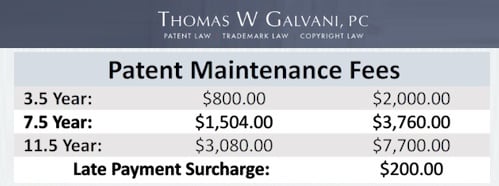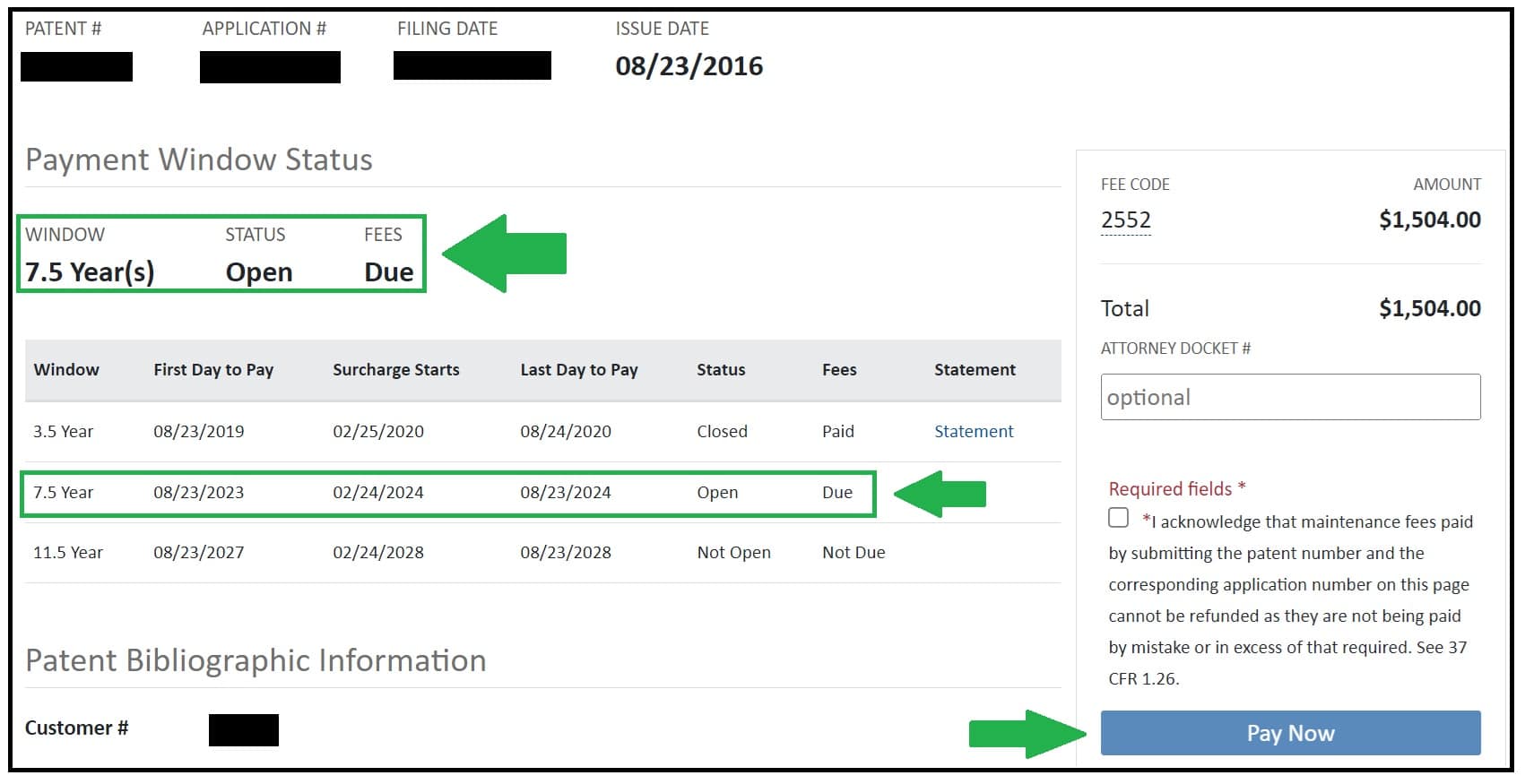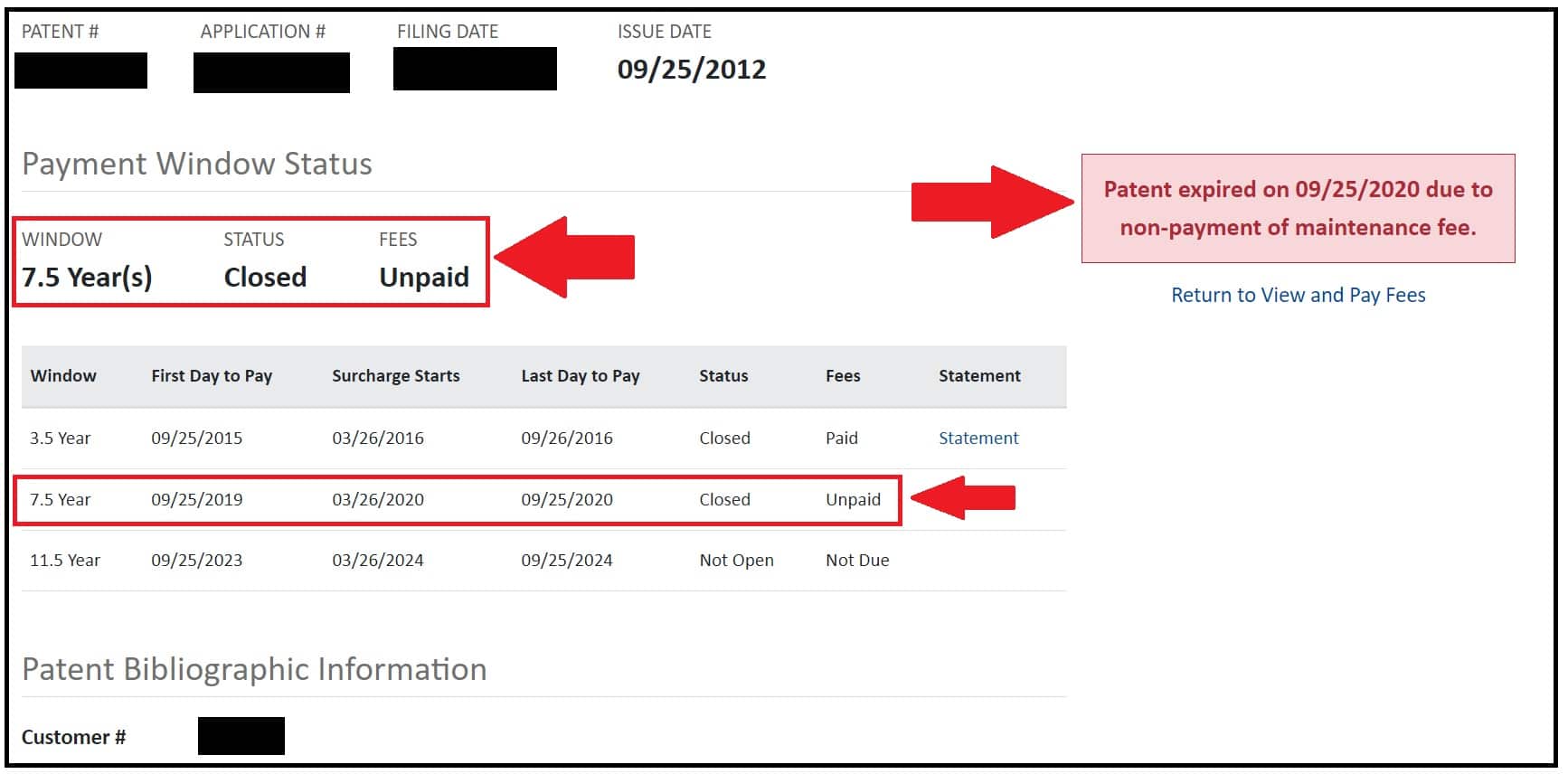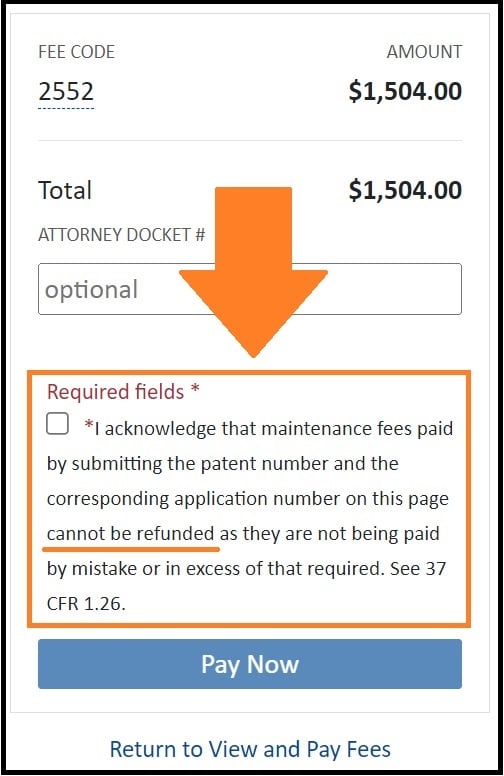Paying Patent Maintenance Fees on an Expired Patent?
Recently the website IPWatchdog published an article that addressed a topic important enough that I thought I should mention it here as well. It concerns patent maintenance fees and the possible accidental payment of maintenance fees on already-expired patents.
Patent Maintenance Fee Basics
Patent owners must periodically pay patent maintenance fees on issued utility patents. Failure to pay those maintenance fees results in the premature expiration of the patent. Failing to pay a maintenance fee should always be an active decision, never an accident.
Though relatively simple to handle administratively, patent maintenance fees are nonetheless a serious matter. They determine the continuing existence of your company’s patents. Entire companies specialize in monitoring, reminding, and attending to the payment of maintenance fees to help avoid a missed deadline.
Patent maintenance fees are also expensive. Fees range from around $800 to $7,700 depending on the size of the patent owner and the lifecycle of the patent. To reduce cost, companies often perform periodic audits on their patent portfolio to cull patents that no longer present value. Savings can be considerable; companies can cut millions of dollars a year by choosing not to pay maintenance fees.

Of course, the decision to not pay a patent maintenance fee should be a deliberate one made after careful consideration and evaluation of the company’s continuing needs.
Unfortunately, sometimes companies accidentally miss their patent maintenance fees and the corresponding patents expire. While there are mechanisms to correct when a patent expires, they can be costly, and they introduce uncertainty about the continuing validity of the patent.
The presumption is that a company will only pay patent maintenance fees on patents which are still alive. This makes common sense. Why pay a maintenance fee on a dead patent? Because sometimes it is not immediately obvious whether a patent has expired or not.
The Life of a Patent
By law, most utility patents in force today have a term of 20 years from their filing date. Therefore, in most cases, it is relatively easy to determine whether a patent is still alive. We simply look at the filing date, check whether today is less than 20 years later, and then pay the appropriate patent maintenance fee.
The Patent Office portal or “maintenance fee storefront” that we use to pay maintenance fees confirms this easy but misleading math. The portal will tell you if the patent has expired for failure to pay a maintenance fee. If it shows that maintenance fees can still be paid, you would not illogically conclude that the patent is still alive. The images below show, first, patent maintenance fees that can still be paid on a live patent, and second, maintenance fees that can longer be paid on a patent because it already expired.


So Why Would a Patent Expire Before a 20-Year Term?
While the law currently states that utility patents are valid for 20 years, it also has provisions for shortening or extending that time. The Patent Office will extend the life of a patent for a variety of reasons, such as if there were delays during prosecution of the application, or if there was a regulatory process that held up issuance.
On the other hand, patent law can shorten the patent life. This may happen if the patent application has a terminal disclaimer or claims the benefit of an earlier-filed application. This would also happen if the patent application is a continuing application, such as a continuation or divisional. These applications will have effective filing dates which are earlier than their actual filing dates. In such cases, a patent could expire one, two, three, or more years before its 20th anniversary. I have clients whose patent families span more than ten years. For those clients, their later-filed applications matured into patents that may have less than ten years of life after issuance.
How Do You Accidentally Pay Patent Maintenance Fees on an Expired Patent?
Oddly, you can actually inadvertently pay maintenance fees on a patent that has already expired.
As far as I know, the Patent Office portal only looks at three things when presenting availability of the next patent maintenance fee for payment:
- the date the patent was issued;
- today’s date; and
- whether you paid the last maintenance fee.
If you paid the last maintenance fee and the next one is now due, the portal will show the next payment window as “open” and the fees as “due” and the Patent Office will gladly let you pay those fees.

The portal does not check the effective filing date. It certainly can, because the Patent Office knows whether the application claims priority to an earlier patent. The portal also doesn’t check for the presence of a terminal disclaimer in the application file wrapper. If it did check either of these things, it could block payment. Or, it could at least provide a warning to the would-be payer that the patent for the are about to pay $7,700 in maintenance fees is actually already dead.
Instead, the Patent Office designed a system that does just the opposite – it attempts to permanently separate the patent owner from its accidental payment. How? When we pay maintenance fees, we have to check a box that says we understand that the maintenance fees are not refundable, as shown in the image below. Ouch.

If you are part of a large company, consider investing in a patent attorney or a docketing system that will carefully consider whether the maintenance fees in your patent portfolio are actually due, or if some of your patents have already expired. If you are a sole inventor and have only a few patents, consult a local patent attorney to make sure you are not about to pay maintenance fees on a dead patent. I have a number of clients who choose to calendar and pay their own patent maintenance fees; wasting money on expired patents is a risk they face by monitoring on their own.
Takeaways on Patent Maintenance Fees
The IPWatchdog article noted that the Patent Office released a statement recently regarding maintenance fees. There, the Office said that maintenance fees paid on expired patents are eligible for refund. This seems contrary to the current disclaimer language on the maintenance fee payment portal. The Patent Office explains, however, that only patent maintenance fees paid on live patents are not refundable. This seems to mean that the Patent Office won’t let you change your mind in affirmatively maintaining a patent, but it will let you request a refund for patents already dead.
For what it is worth, the Patent Office has a downloadable spreadsheet calculator that can help you determine whether your patent is still alive. However, it is not straightforward. It asks a lot of questions that will probably be confusing to the layperson, many of which are not relevant to most patents but will trip you up.
In the end, the Patent Office simply says “the [maintenance fee] storefront system is unable to calculate for terminal disclaimers and may unintentionally allow those users to pay maintenance fees on an expired patent.” And if you are not careful, you may unintentionally pay those fees and have to go through a refund process that may or may not be successful. So, buyer beware.
For questions about patent maintenance fees, patent life, or other topics in the patent world, please call registered US patent attorney Tom Galvani at 602-281-6481. Tom maintains patent portfolios for many clients and is happy to discuss helping you, too.
